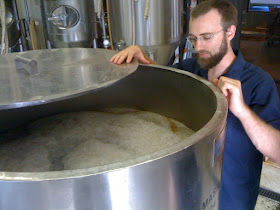 ON THE AVENUES: Hauntingly multinational.
ON THE AVENUES: Hauntingly multinational.By ROGER BAYLOR
Local Columnist
According to the dictionary, “to haunt” is to visit or inhabit as a ghost. Not unexpectedly, “to be haunted” is to be visited by these spectral non-corporeals, or to be inhabited by them.
Seeing as in theory, ghosts are immaterial spirits – more prosaically, we think of them as having been alive (in the past tense) and now dead (in a passed sense) – it’s probably neither incorrect nor particularly original for me to suggest that ideas have the power to haunt, too.
And there are memories, too; shadowy recollections of things passed, subjected to the human brain’s self-protecting preference for airbrushing, and often regurgitated as nicely pruned and tidied nostalgia.
In short, one glosses over the bad parts. Because of this safety mechanism, it is my view that memories themselves often are hazy hauntings, adorned by remnants of ideas propelling actions, which in turn prefaced the memories.
Ideas endure and are less adaptable than memories. They’re stubborn this way, and perhaps the haunting emanates from the dissonance. With distance from the source and the time, the spookiness is compounded, perhaps even exponentially, and that’s why aging is about more than mere physical deterioration.
---
It is now clear that my 50th birthday last year qualifies as a watershed event (I wrote about it at the time). In the realm of thoughts and ideas affirming and animating my interior world, something as yet indefinable keeps churning, collating and coagulating. I sense future change, and seek to remain alert to its possibilities. Just the same, I’m haunted by the past.
It is a cliché, but the only constant is change. It occurs. Most of the time, it comes slowly and imperceptibly. Given the age of the planet and the “deep-time” pace of evolution, none of this is a surprise, and yet we humans are creatures of otherwise irrelevant habit, locked blithely into our daily personal and cultural constructions, and surfacing only periodically to notice the alterations in our landscape, be it local or global.
Then, belatedly, we exclaim: “What happened?”
Usually, whatever it is actually has been happening for a long, long time. We didn’t notice the gradual transformation, because as John Lennon presciently noted, life is what happens to you while you’re busy making other plans.
---
So it is with me. I am midway through my second year of circumstance-enforced absence from the European continent. As the time passes, my attitude evolves.
From 1985 through 2009, I generally took one trip each year, longer and less frequent journeys in the beginning, and then as the years passed, shorter jaunts taken more often.
After the Berlin Wall fell in 1989, the intense geo-political lure of the prevailing Cold War climate disappeared overnight, even if history did not stop, and the focus of my subsequent travels increasingly was applied to beer’s European contexts in history and culture.
The current travel hiatus owes to an absence of time as well as financial and philosophical realities coming in the aftermath of Bank Street Brewhouse’s inception in 2009. Briefly stated, my company’s expansion project has required herculean efforts, drained all the coffers, and led to an unexpected top-to-bottom rethink of my personal and professional position in the world of beer and brewing, some of which I’ve shared previously.
There’s also been an obvious dove-tailing between NABC’s growth and an escalating interest in the community where I live, culminating in my recent failed candidacy for city council. As a result, a temporary suspension of European visitation has been the most practical course, and my wife and I fervently hope that in 2012, we’ll be able to make a trip overseas.
Less obviously, perhaps remaining stateside for more than six months at a time, exploring my own terrain and experiencing various epiphanies in my 50th year have combined to produce an altered outlook. It is retrospective, yet also forward-gazing.
I’ve come to realize that during my early trips to Europe, whether I accurately fathomed it or not, an era was coming to a close. There’s a considerable difference between the 40th anniversary of war’s end in 1985, and the 65th in 2010. Obviously, a whole generation has passed on since then.
The Cold War’s end hastened European integration, and European unity has profoundly altered the landscape in every conceivable way, including in the areas of beer and brewing. We’re now a full thirty years removed from the traditional European beer culture described so lovingly by the late Michael Jackson in his seminal volumes.
Much of what Jackson documented, which inspired so many of us to emulate him, is now as obsolete as his “Beer Hunter” series on VHS videotape, decimated by consolidations, familial sagas, changing tastes and just plain time inexorably passing.
---
Naturally, there are certain lamentations, but in truth, the mind reels at the joyous extent of what has arisen to take the place of the disappeared.
Craft breweries and brewpubs are seemingly everywhere, from Scandinavia to Italy and beyond. American brewers like Stone are making plans to brew American-style craft beers in Europe, for a local niche market.
Being part of a business in the midst of such an unprecedented flowering means more to me than money, although of course, a small piece of the largesse would be nice.
The final verdict remains murky, but goes something like this: I’ll always be a European, and I’m haunted by the ideas and past experiences that compelled me to comprehend this nationality, but during the course of transitioning NABC to a position of emphasizing its brewing operation, I’ve been serendipitously rediscovering something inside, which is about being an American.
Is it time for dual citizenship?


















